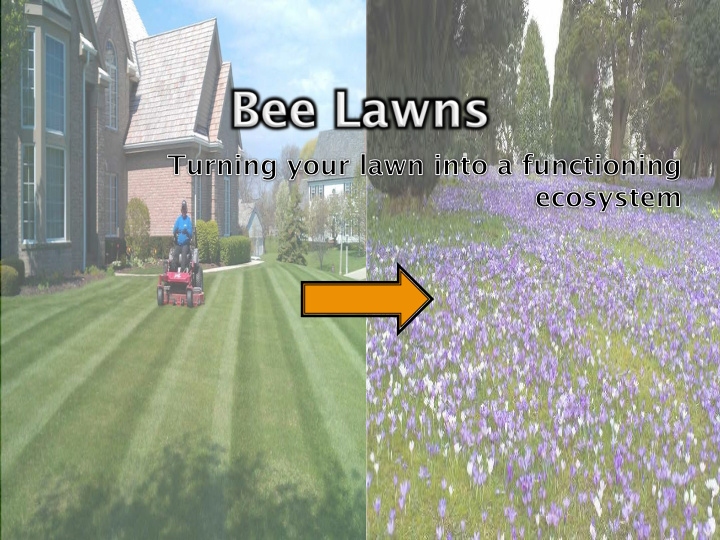



� Turf lawns account for 2% of continental US land cover ◦ Outside homes, public parks, commercial areas/storefronts ◦ Urban/Suburban expansion � Reconciliation Ecology: Encouraging biodiversity in human-dominated landscapes. ◦ Middle-ground for humans and bees
� Redesigning the turf lawn ◦ How can we remodel the turf lawn to meet the needs of both humans and bees � Enhance turf areas with angiosperms
� Build from the bottom up ◦ Selecting a turf species (Ian Lane) ◦ Selecting floral species ◦ Evaluating management practices ◦ Quantifying bee communities
� Which turfgrass species ◦ Low maintenance ◦ Non-competetive species � Density � Growth rate
� Testing turf species for forb establishment ◦ Grass species � Kentucky bluegrass � Hard fescue � Tall fescue � Perennial ryegrass ◦ Forb Species � Kura clover ◦ Two trials (2013, 2014)
� 8 forbs evaluated for establishment ◦ 6 native, 2 non- native � Compared two di fg erent sites ◦ SPRF (Sandy soil) ◦ TROE (Clay-loam)
� White clover, Self-heal, creeping thyme, ground plum established successfully � Ground plum only at SPRF � Consistent results between years. � Bloom totals di fg er, trends similar � Thyme establishment at SPRF � Bloom totals low, high vegetation counts
� Pre-seeding disruption ◦ Altering grass/soil surface � Scalping, aeration, control ◦ Between site di fg erences � High management vs low management ◦ Floral species � Clover, Heal, Thyme
� Establishment more successful at low management site. � Scalping benefits establishment of clover ◦ Results for heal/thyme not definitive
Parks sampled � How can we quantify the e fg ects of turf lawn enhancement ◦ Establish a baseline � Sample bees on existing patches of white clover in Minneapolis parks
� Phase Two ◦ Enhanced parks vs clover only parks � Site setup ◦ Dormant seeding ◦ Pre-seeding disruption ◦ Comparing bee communities
Dr. Eric Watkins Dr. Marla Spivak Money Umn Bee lab Ian Lane, Ph.D candidate Andrew Hollman Umn Turf lab
Recommend
More recommend